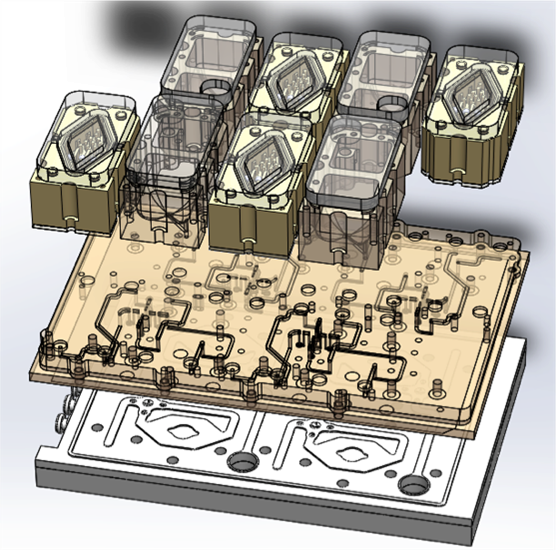Meet Chip: Female Reproductive System
From puberty until menopause, the female reproductive system is capable of an amazing feat: growing a new human being. The reproductive system also has many other functions. Every month, the ovary releases an egg, and the uterus sheds and replenishes its lining. The ovaries also make hormones that circulate through the body and affect a woman’s health. Scientists need better ways to test how new drugs and other chemicals affect the female reproductive system.
Modeling Ovaries, Uterus and More
Understanding women’s health requires more comprehensive knowledge about the workings of the female reproductive system, including monthly menstrual cycles, pregnancy, and production of hormones that affect the entire body, from bone maintenance to blood clotting to sexual health. But there are limits to how much scientists can understand about the workings of the human female reproductive system by studying animals or cells growing in a lab.
An NIH-supported team of researchers from Northwestern University, Charles Stark Draper Laboratory, and University of Illinois at Chicago is building a 3-D model of the female reproductive system that scientists will be able to use to test drugs and understand more about how the system works.
In a woman’s body, the tight network of ovaries, fallopian tubes, uterus, cervix and vagina use hormones to communicate and regulate each other. That kind of connection will be engineered into the chip, which will have cells of many types connected together by tiny pumps and tubes that carry liquids and hormones.
In the body, tiny hair-like structures known as cilia beat in unison to push an egg down the Fallopian tubes. In this video, Fallopian tube lining cells grown in a complex cell structure show the same behavior. The next step will be to incorporate the tissue onto a chip.
Looking Ahead
For ethical reasons, pregnant women often are not allowed to participate in studies of new drugs. In addition, for many years, all women who had the potential to get pregnant were excluded from numerous research studies, and the vast majority of basic science research used only male-derived cells and male animals. These approaches created a lack of information about women’s health and female physiology. Scientists still have much to learn, and having a working 3-D model of the female reproductive system may help them better understand how new and existing drugs affect women specifically.
A model of the female reproductive system also could be integrated with chips representing other organ systems. Such a model may help researchers understand how reproductive hormones affect the rest of a woman’s body, not just the reproductive system. For example, signals from reproductive hormones affect how the liver works. Because the liver is involved in processing drugs, connecting a female reproductive system chip to a liver on a chip could help scientists understand how a new drug would affect women who have different levels of hormones.
The chip also could help scientists understand the various cancers, sexually transmitted diseases and benign tumors that can grow in the female reproductive organs. Many of these diseases are poorly understood, but a chip could help solve many scientific and medical mysteries pertaining to women’s health.
In the long run, this expanded knowledge about the female reproductive system could aid in the design of a male reproductive tract on a chip. The development of these two systems is predicted to catalyze drug discovery and toxicity studies in the new era of precision medicine.



